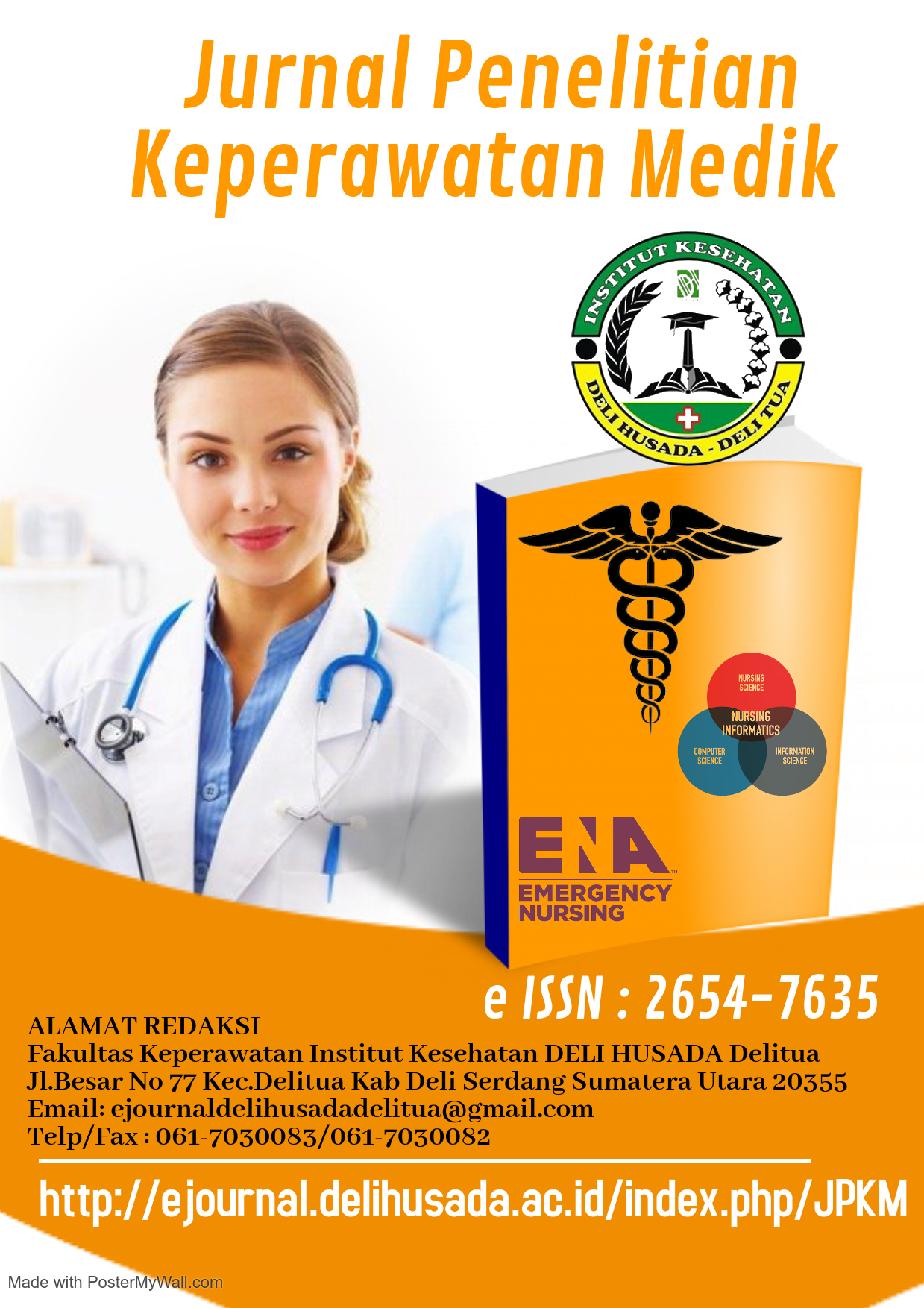HUBUNGAN PERTAMBAHAN BERAT BADAN IBU SELAMA HAMIL DENGAN KEJADIAN BAYI BERAT LAHIR RENDAH DI PUSKESMAS HUTA RAKYAT KEC.SIDIKALANG KAB. DAIRI
Abstract
Abstract
Maternal nutrition is crucial for the health of the fetus. Pregnant women need an additional 500 calories, but in early pregnancy, they often experience nausea, vomiting, and food aversions, which hinder the fulfillment of their energy needs. This study aims to determine the relationship between maternal weight gain and the incidence of low birth weight (LBW) at the Huta Rakyat Health Center, Sidikalang, Dairi Regency, in 2023. This study uses a quantitative approach with a cross-sectional design and involves 52 third-trimester pregnant women as samples selected by accidental sampling. The results of the study show a significant relationship between maternal weight gain and the incidence of LBW (p-value 0.000 < 0.05). It is expected that health workers, especially midwives providing ANC services, can closely monitor maternal weight gain and provide more intensive education on the importance of appropriate weight gain to prevent the occurrence of LBW.
References
Alebachew W, Admassu B, Wubetu M. Knowledge of pregnant women about weight gain during pregnancy and associated factors. BMC Pregnancy and Childbirth. 2021;21(1):233. Available from: https://bmcpregnancychildbirth.biomedcentral.com/articles/10.1186/s12884-021-03637-
Avrilina, S., & Sari, D. (2021). Hubungan asupan gizi dan berat badan ibu hamil dengan berat badan lahir bayi. Jurnal Gizi Kesehatan Indonesia, 7(3), 112-120.
Badan Penelitian dan Pengembangan Kesehatan. Riskesdas 2018: Laporan Nasional. Jakarta: Kemenkes RI; 2019.
Boston Children’s Hospital. Low Birth Weight in Newborns. Boston: Boston Children's Hospital; 2020. Available from: https://www.childrenshospital.org/conditions/low-birth-weight
Cutland CL, Lackritz EM, Mallett-Moore T, Bardají A, Chandrasekaran R, Lahariya C, et al. Low birth weight: Case definition & guidelines for data collection, analysis, and presentation of maternal immunization safety data. Vaccine. 2017;35(48):6492–6500.
Institute of Medicine. Weight Gain During Pregnancy: Reexamining the Guidelines. Washington, DC: The National Academies Press; 2009. Available from: https://www.ncbi.nlm.nih.gov/books/NBK32740/
Kemenkes RI. (2021). Strategi Pengendalian Berat Badan Ibu Hamil dalam Pencegahan BBLR. Jakarta: Kementerian Kesehatan Republik Indonesia.
Kementerian Kesehatan Republik Indonesia. (2021). Pedoman Praktis Pemantauan Berat Badan Ibu Hamil. Jakarta: Kemenkes.
Kementerian Kesehatan RI. Pedoman Praktis Pemantauan Berat Badan Ibu Hamil. Jakarta: Kemenkes; 2021.
Rahmawati Y, Siti N, Nurul I. Kenaikan berat badan ibu hamil sebagai faktor risiko BBLR. Jurnal Kebidanan. 2021;9(1):22-9.
South Africa.PLoS ONE, 14(3). doi: 10.1371/journal.pone.0213058.
Stephanie, H. (2016). The risks of excessive weight gain during pregnancy. American Journal of Obstetrics and Gynecology, 214(1), 9-15.
Subaim N, Ariyanti N. Status gizi ibu dan berat badan lahir rendah: faktor risiko yang dapat dicegah. Jurnal Gizi dan Kesehatan Indonesia. 2021;3(2):57-64.
weight babies in Eastern Nepal. Int J Pediatr. 2015;2015:807373 Butte, N.F., dkk.2003.Composition of gestational weight gain impacts maternal fat retention and infant birth weight.American Journal of Obstetrics and Gynecology 189:1423–1432.
WHO. (2022). Maternal and perinatal outcomes in low- and middle-income countries: Evidence and implications. Geneva: World Health Organization. Available from: https://www.who.int/
Wigianita L, Rachmawati PD, Sukandar D. Peningkatan berat badan ibu hamil berdasarkan IMT. Jurnal Gizi Klinik Indonesia. 2020;16(1):24-30.
Wingate, M. S., Epstein, A. E. and Bello, F. O. 2016.Perinatal Epidemiology.in International Encyclopedia of Public Health. Elsevier Inc., pp. 442–448. doi: 10.1016/B978-0-12-803678-5.00327-1
World Health Organization. (2022). Low birthweight: Country, regional and global estimates. Geneva: WHO. Available from: https://www.who.int/teams/nutrition-and-food-safety/monitoring-nutritional-status-and-food-safety-and-events/joint-low-birthweight-estimates
World Health Organization. Low Birthweight: Country, Regional and Global Estimates. Geneva: WHO; 2022. Available from: https://www.who.int/teams/nutrition-and-food-safety/monitoring-nutritional-status-and-food-safety-and-events/joint-low-birthweight-estimates
Yanti N, Widyaningsih A, Astuti D. Hubungan pertambahan berat badan ibu hamil dengan berat badan lahir bayi. J Gizi dan Kesehatan. 2020;12(2):105-12.
Zerbeto AB, Cortelo FM, Élio Filho BC.2015.Association between gestationalage and birth weight on the language development of Brazilian children: a systematic review. J de Pediatr.91(4):326–32








